Over the past decade, green building initiatives went from fringe practice to mainstream movement. This evolution of building standards to better the planet, however, has largely ignored the people who inhabit them.
The WELL Building Standard is the first-of-its-kind standard to focus solely on building occupants, and is the leading tool for elevating human health in homes and offices globally. Pioneered by Delos and adminstered by the International Well Building Institute, the standard is now expanding outside the commercial office space. With pilot programs underway in healthcare environments, Phil Williams, President of Business Development at Delos, introduced WELL at the Health Facilities Innovation Forum (now HealthSpaces).
For healthcare professionals, the evidence-based standard will serve as a guide for those who see a compelling need to attract and retain the best talent, reduce negative outcomes and improve positive results.
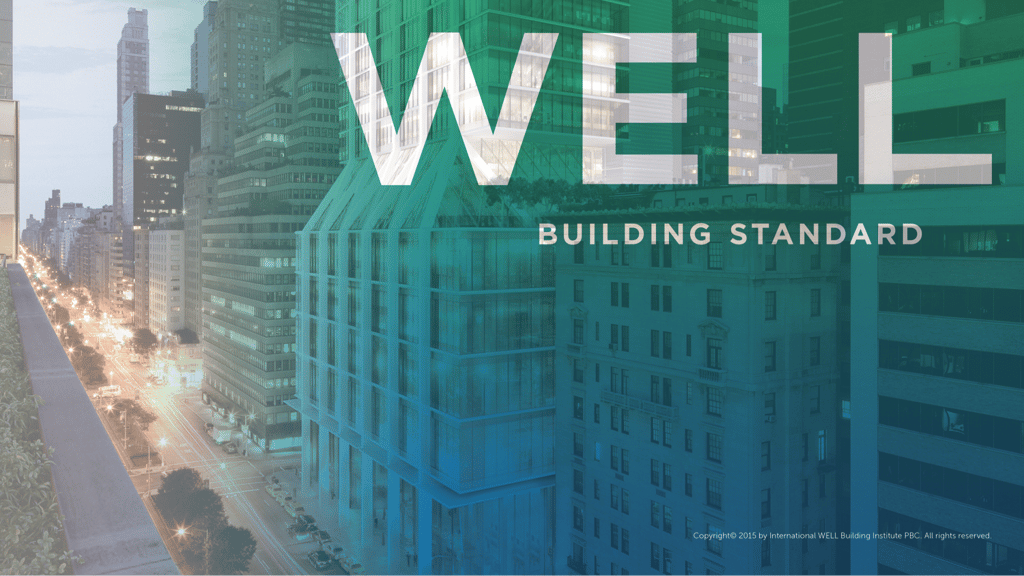
The Impact of the Indoor Environment
Williams encourages facilities leaders to look beyond the idea of facilities as “a roof and four walls.” With 90% of our time estimated to be spent indoors, buildings have an undeniably profound impact on the health, happiness, and well-being of its occupants.
Facilities executives have a direct impact on the environments in which people live, work, play, heal and rest--and the level of quality in which they do so. Yet Williams acknowledges it's a novel mental shift to consider a building positively augmenting the health of those in it, rather being neutral or benign.
“I think of innovation in simple terms: evolution, migration and revolution,” Williams said. “Evolution is the small changes that add up over time while revolution is the big disruptive bang. Migration is in between: it’s saying ‘there’s a good idea over there, let’s bring it to me.’
WELL is migration--we’re standing on the rooftop three years ago yelling to the development world, ‘Your buildings can positively affect the health of those in it.’ That same opportunity is here in the healthcare world.”
Bringing the Silos Together
The WELL Building standard has now been rolled out in hundreds of projects in 26 different countries. In other words, the training wheels are off. While the current standard was designed to be applicable to offices, pilot programs include sports-fitness recreation, large public spaces (airports, convention centers.), and the healthcare world, from clinics, hospitals, MOB’s, acute care centers, and assisted living.
WELL capitalized on research that already exists by conducting a comprehensive peer review that unites the silos of building science, health science and business economics. Similarly, the standard is focused on applying to buildings that exist, rather than just the shiny new ones. The standard applies to three typologies: core and shell, new and existing interiors, and new and existing buildings.
“Construction and design is complicated enough...we wanted to create the biggest “easy” button you possibly could.”
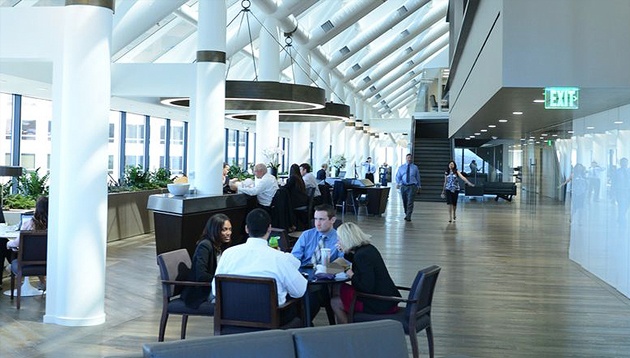
Caption: The CBRE Building in Los Angeles was the world's first WELL certified office.
The peer review of the standard included many major medical institutions and individuals, including the Mayo Clinic, the Cleveland Clinic, Harvard School of Public Health, and numerous others.
Williams shared that lessons learned as an industry from past certifications shaped the guidelines. Similar to LEED, the standard involves inclusive third-party verification but isn't a "one and done" process, with recertification required. In particular, WELL emphasizes testing performance over results.
“If I take evidence-based, peer-reviewed science and potentially put it in a better building, we’ll get a better environment. And if we put people in a better environment, science tells us we’ll have healthier, more productive workers,” Williams said. “Very soon in the future we will be able to make that transition from commercial offices into healthcare environments.”
Migration into the Medical Field
With medical employees subjected to some of the worst health-performing criteria, from shift work to high stress, Williams believes a shift into healthcare can cause a hugely positive transformation.
“The medical world will not be about a direct intervention between the doctor and the patient. This is about the people who service all these patients--what can we do to improve their personal health?” Williams said.
“The standard is all about making their environment physically better. I think that will drop right down to the bottom line, whether it means less errors at 2 a.m. or the ability to understand how we can recognize a symptom because their cognitive skills are sharper,” said Williams.
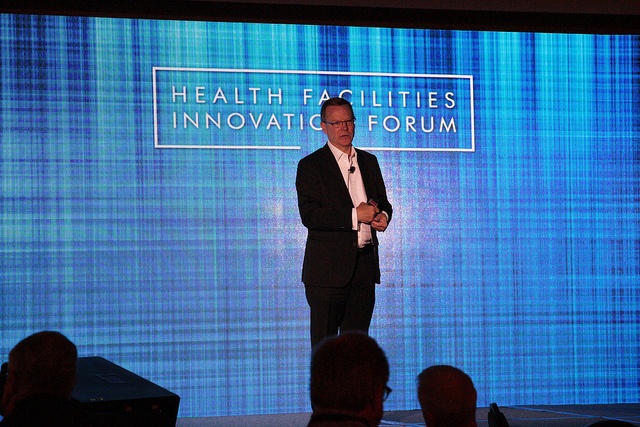
Williams states that human capital pays off in financial capital (a more productive business). WELL Buildings attract and retain employers, tenants, and clients by slashing negatives, like sick days, and increasing positives, like better ideas and marketability.
A Comprehensive Approach
WELL’s performance standards are divided into seven categories, each of which is vitally important to occupant health and wellbeing in the built environment.
Seven Categories
- Air
- Water
- Nourishment
- Light
- Fitness
- Comfort
- Mind
Each of these seven categories is further broken down into features (a total of 102), which can be compared to LEED’s “credits.” The features are split between preconditions (requirements) and optimizations, which are optional suggestions.
“Each page is designed to remind us as facilities managers that buildings are about the people--not the duct work, concrete, steel and power. It’s designed to be evenly divided amongst all the aspects of health: mental, social, cultural and physical,” Williams said.
“It’s about behavior and policy as much as it is about the things in the building. Frankly, you can’t have a platinum building without platinum behavior.”
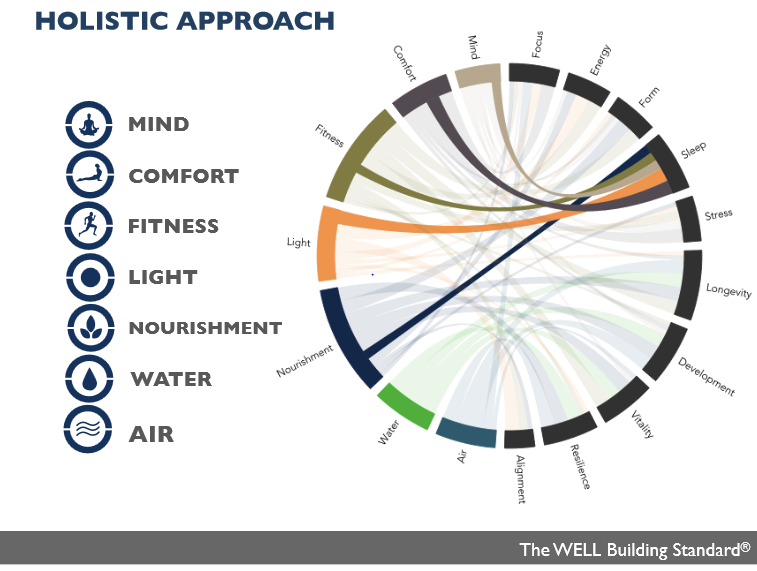
Revolutionary Research
With facilities leaders bombarded by so many facts and figures, Williams believes it can seem easier to do nothing than decipher the data. That’s why Delos and the Mayo Clinic joined forces to create human-centered research that can be translated into actionable design principles.
The partnership produced the Well Living Lab, a state-of-the-art research lab. Disguised as an ordinary office, the facility is completely reconfigurable and is able to replicate the interior design of any working environment to test both new and existing innovations.
“We have to do better than just supply facts. Another thing we have to recognize is the business case: what is the value of our properties and the war for talent?” he said. “The quality of our organization can only be extended to our true business by the quality of our people. Ultimately if we do these wonderful things, we’ll have healthier people. Right now we’re getting sicker sooner, and that’s not a sustainable economic engine for anyone.”

The Well Living Lab disguised as an ordinary office.
Delos and the Mayo Clinic spotted opportunity in the fact that clinical labs and environmental labs remain segregated.
“Taking these silos that were separated, we created a multidisciplinary living lab that understands the relative impacts of air, water, light, food and nutrition in a real-life working space,” Williams said.
The lab is unique in its highly flexible and environmentally adjustable capabilities--and is the first of its kind committed to research on the real world impact on human health. Researchers are able to compare and contrast everything from food, furniture, fitness, flexibility, color, and plants.
While participants go about their daily business inside the lab, they’re able to move around freely thanks to advanced sensor technology, remote monitoring and cameras that capture facial images.
Even more remarkably, the research doesn’t end there-- a remote monitoring control center enables researchers to observe and track participants outside the lab as well. Qualitative and quantitative data reveals how changes to the physical environment affect mood, morale, physical comfort and productivity. Delos and the Mayo Clinic have plans to develop studies on every imaginable situation.
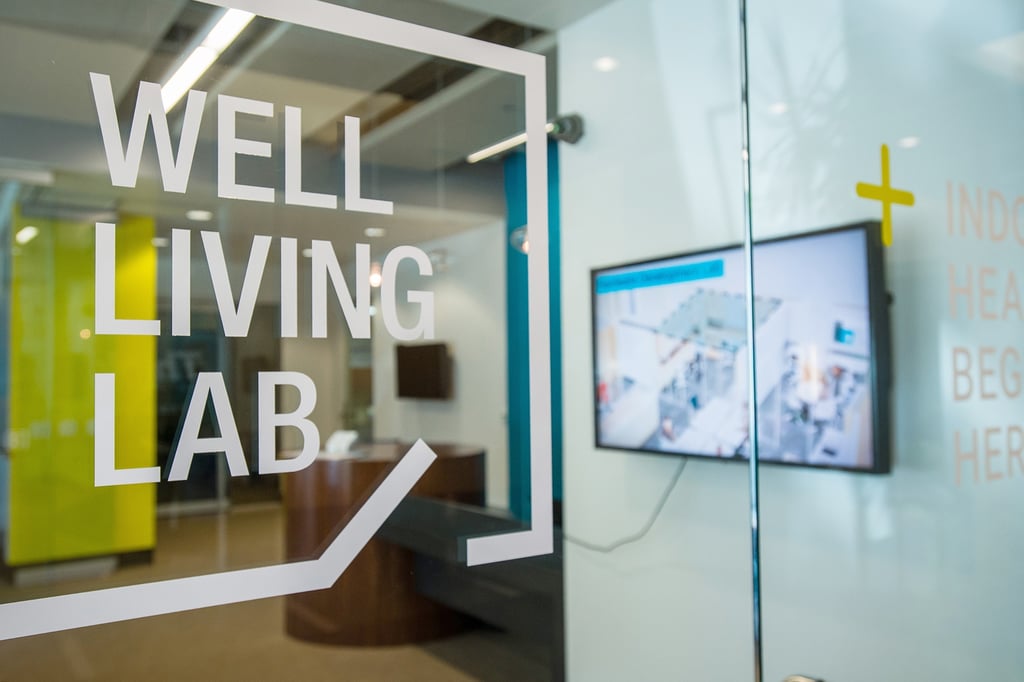
WELLcome To The Future
While the lab's research focuses on the effects that physical building components have on productivity, doctors are also investigating internal biologics such as blood pressure, galvanic skin response, and more.
“The Internet of Things (IoT) is a hot topic, but I think healthcare is going in the direction of ‘the Internet of Me,’” Williams said. “Pretty soon it’s going to be all about personal wireless wearable devices.”
Just ass negative things can move from work to home, we also know that positive things can move from work to home. “The ability for us to link our resource consumption with a high-productivity environment for our people that is healthy for them at the same time puts us right at the opportunity of what success could mean for your organization," Williams said.
It’s undeniable that WELL’s holistic, human-centered approach is pioneering a revolutionary shift in how the industry views sustainability. In the healthcare world, where each day produces life-or-death outcomes, the potential for enhanced performance could make our hospitals more optimized than ever before.
To learn more about the WELL Building Standard, watch Phil Williams’ full talk here:

Posted by
Collaborate with your Peers!
HealthSpaces is a community for people that plan, design, build and operate spaces where healthcare is delivered.
June 7-9, 2026 | Braselton, GA
Learn More


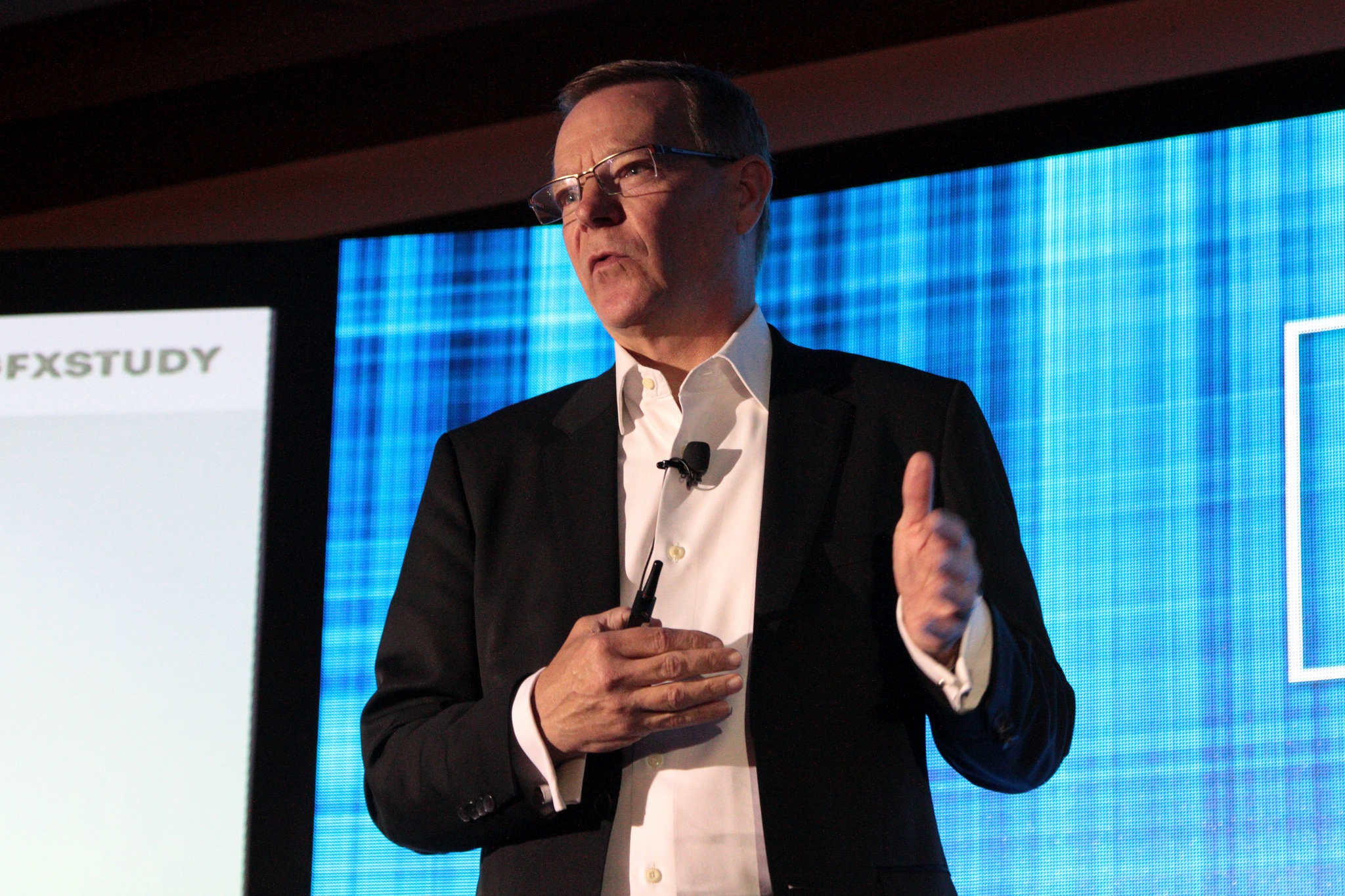

-4.png)
-Dec-09-2025-05-48-44-4379-PM.png)
-4.png)
-1.png)
-2.png)

Comments